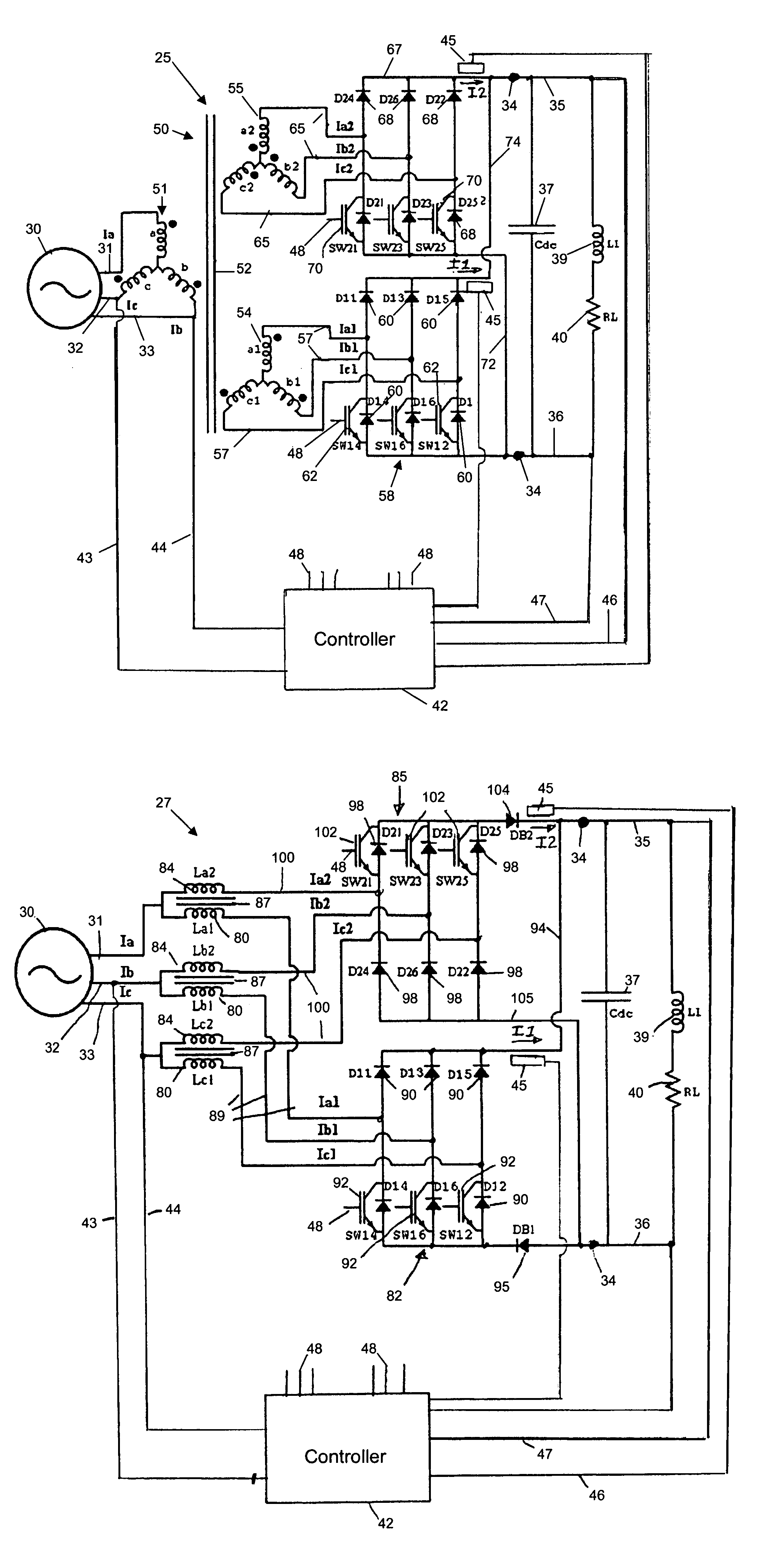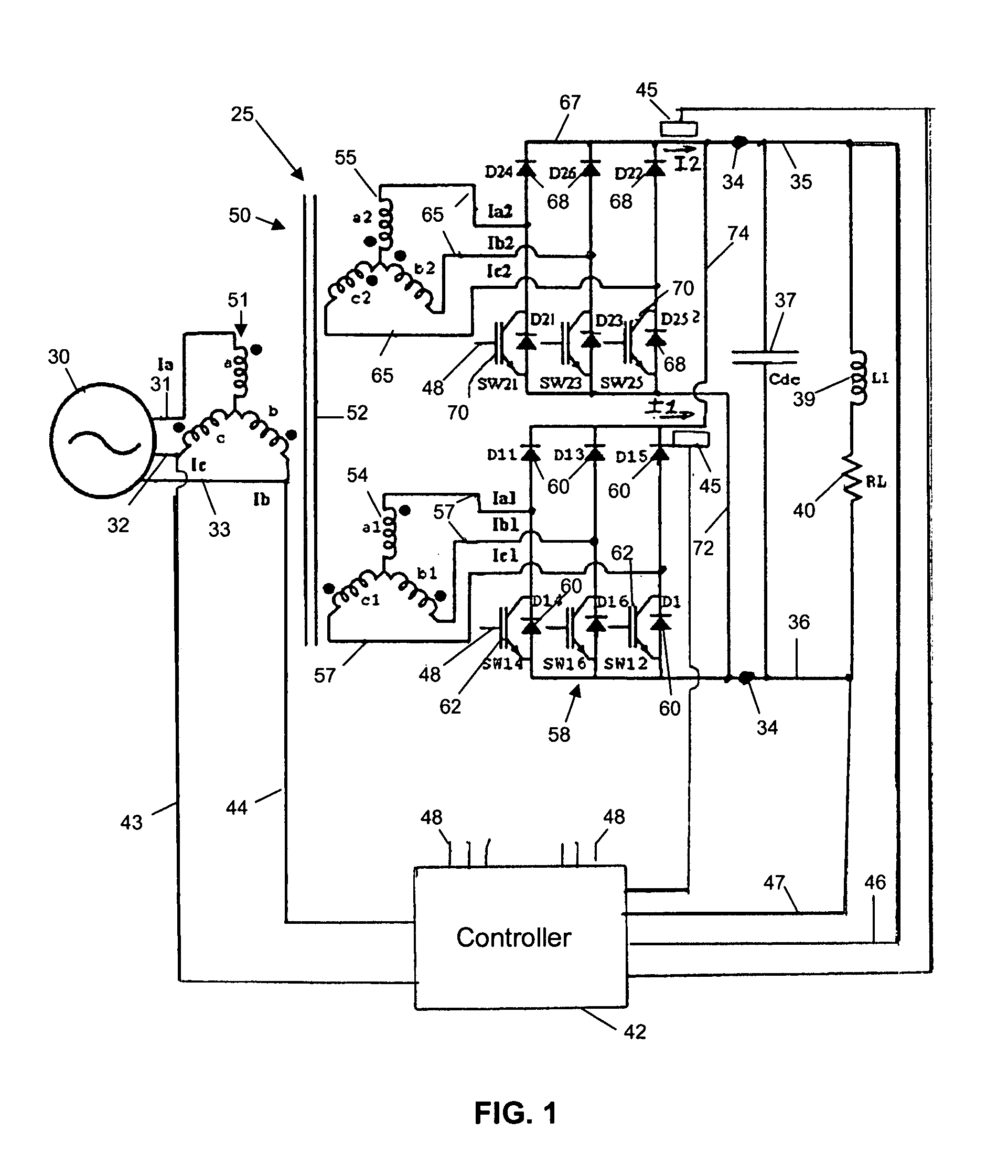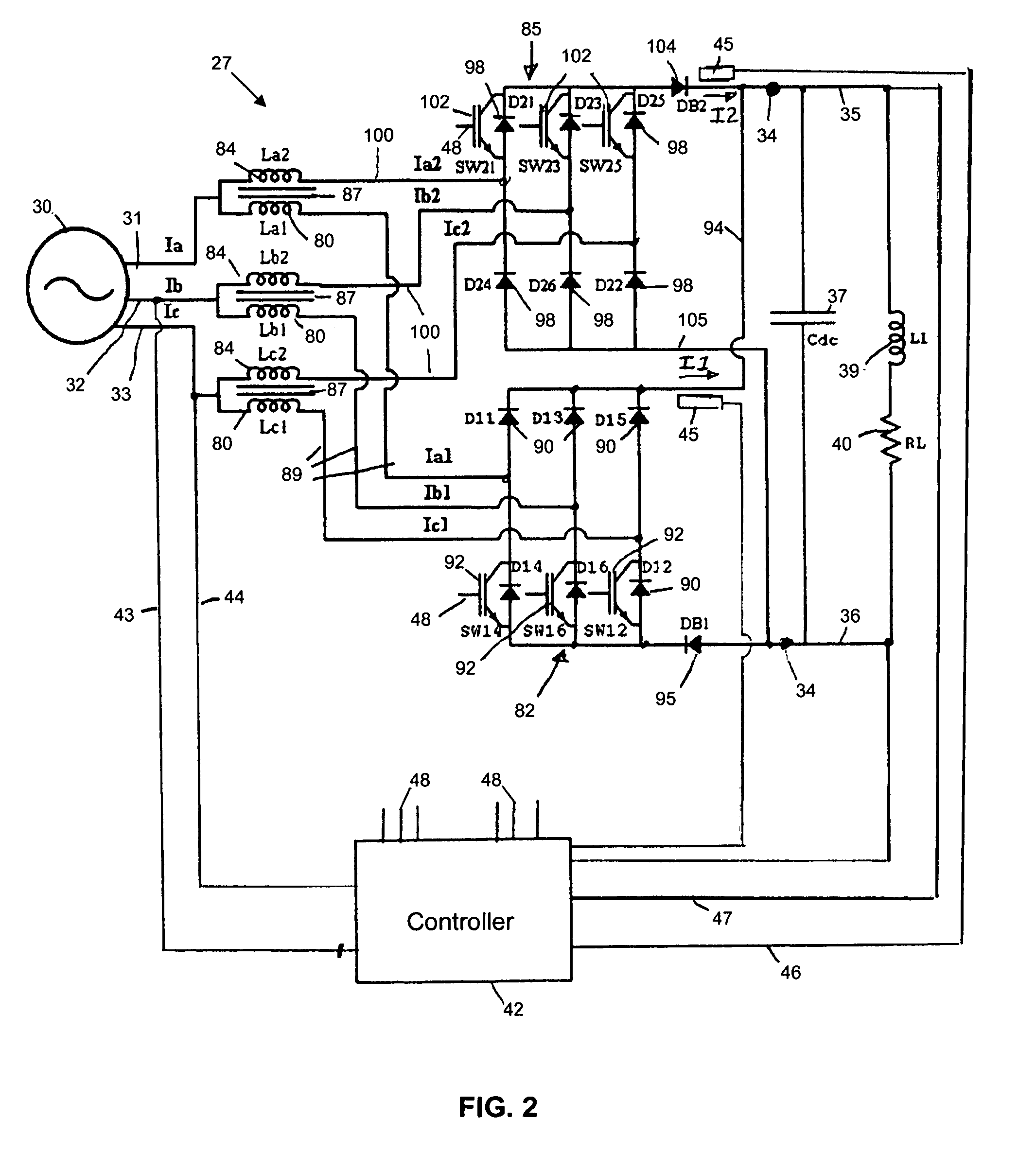Boost rectifier with half-power rated semiconductor devices
a semiconductor device and boost rectifier technology, applied in the direction of electric variable regulation, process and machine control, instruments, etc., can solve the problems of increasing the cost of switching devices, reducing the efficiency of switching devices, and introducing significant harmonic distortion to the ac power system of rectifiers, so as to achieve the reduction of the acoustic noise and losses across the input side inductors, less expensive devices, and the effect of reducing the ac power conversion ra
- Summary
- Abstract
- Description
- Claims
- Application Information
AI Technical Summary
Benefits of technology
Problems solved by technology
Method used
Image
Examples
Embodiment Construction
[0034]The rectifier of the present invention may be implemented in three-phase AC systems, and with and without AC side transformer isolation. For purposes of illustrating the principles of the invention, a three-phase boost rectifier in accordance with the invention having AC side transformer isolation is shown generally at 25 in FIG. 1, and a three-phase boost rectifier in accordance with the invention without AC side isolation is shown generally at 27 in FIG. 2. The principles of operation of the boost rectifiers 25 and 27 are essentially similar. A three-phase AC source 30 (e.g., AC power mains or a generator) provides three-phase AC power on rectifier input lines 31, 32 and 33, and each of the rectifiers 25 and 27 provide DC output power at rectifier output terminals 34 connected to DC bus lines 35 and 36 which have a DC bus capacitor 37 connected between them. The output terminals 34 may be discrete connectors but may also be, for example, conductors connected integrally with ...
PUM
 Login to View More
Login to View More Abstract
Description
Claims
Application Information
 Login to View More
Login to View More - R&D
- Intellectual Property
- Life Sciences
- Materials
- Tech Scout
- Unparalleled Data Quality
- Higher Quality Content
- 60% Fewer Hallucinations
Browse by: Latest US Patents, China's latest patents, Technical Efficacy Thesaurus, Application Domain, Technology Topic, Popular Technical Reports.
© 2025 PatSnap. All rights reserved.Legal|Privacy policy|Modern Slavery Act Transparency Statement|Sitemap|About US| Contact US: help@patsnap.com



